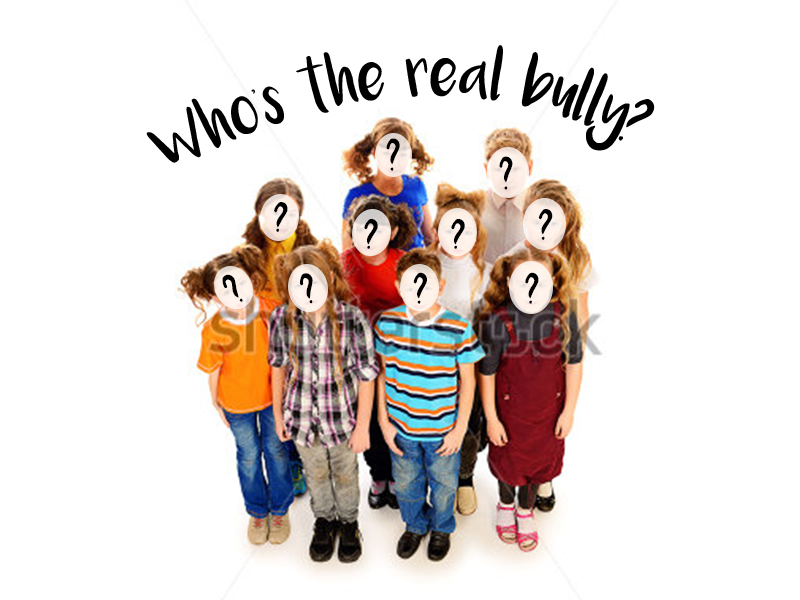This blog post is the first in a series about bullying brought to you by Hazelden Publishing for Educators.
You’ve probably seen a post in your Facebook newsfeed or been on the receiving end of a parent phone call: “My daughter was bullied on the playground today! The names she was called are unacceptable and I’m going to talk to the principal.”
Your heart quickens and the hair on your neck stands on end—just the word “bullied” sends up the red alert, and in many cases it should. Twenty-eight percent of students in grades 6 through 12 report having been bullied, and we’ve all read the news stories about heartbreaking aggression happening not only in school hallways but also on Instagram accounts and Snapchats gone wrong. No school wants to be the next headline or to have that kind of behavior define its culture.
Indeed, the fact that bullying is on everyone’s radar these days is undoubtedly a good thing. We wouldn’t want to go back to a time when harmful speech or behavior was brushed under the rug with a breezy “boys will be boys” or “that’s just part of growing up.”
Still, as often is the case when an issue like bullying takes center stage, the term is being used more and more commonly—and not always to our benefit. When a one-off name-calling incident receives the same treatment as a systematic pattern of abuse, the meaning of the word “bullying” begins to lose its potency.
So, what exactly is bullying and what’s not? WeAreTeachers recently spoke with a handful of educators and experts to find out.
What Bullying Is
The team at Clear Springs Elementary in Minnetonka, Minnesota, defines bullying as “when a person repeatedly and purposefully does mean and hurtful things to a person who has a hard time defending him- or herself.”
That definition is a kid-friendly version of the official definition used by psychologists: bullying is “verbal or physical aggression that occurs repeatedly and involves some kind of power difference” between the aggressor and the victim. While each state has their own definition of bullying, says Julie Hertzog, director of PACER’s National Bullying Prevention Center, some components are common: Someone is being physically or emotionally hurt, the target has a hard time defending him- or herself and there is an imbalance of power.
Physical or Emotional Harm
An action becomes bullying when the victim is hurt. Teasing or name calling that may not faze one child may hurt another one’s feelings and when repeated, turns into bullying. “The behavior changes based on who receives it,” says Jim Dillon, author of Reframing Bullying Prevention to Build Stronger School Communities, “and that’s hard for kids to figure out.”
Bullying also separates kids from their peers. If you ask kids to define bullying, says Hertzog, they’ll say that it’s about when someone makes you feel less about who you are as a person. One of the most damaging results of bullying is when it excludes and isolates kids.
That distinction—that it’s bullying when one child feels hurt, even if the original child doesn’t mean to cause harm—is important for kids to grasp. Kids may not realize that their teasing has gone beyond joking until it’s too late.
An Imbalance of Power
Bullying is about power. Most of the time, kids aren’t bullying to make another kid’s life miserable, it’s a means to an end. Think: The child who’s in the middle of the social strata at school wants to gain power, so he (or she) starts to bully a child who has less social status. For the bully, who feels like something is missing, bullying is an attempt to fix a problem he feels he’s having.
From the other point of view, when a student is bullied, he feels defenseless. He can’t stop the bullying by himself, and no one is sticking up for him, either because adults haven’t noticed the bullying or the target has been told to ignore it.
What Bullying Isn’t
The term “bullying” is one that we should only use when we’re sure it applies, because, particularly with recent legislation, it’s significant. In short, bullying is not the same as conflict, a game gone too far or a one-time event.
It’s Not Conflict
Bullying is not the same as conflict. When kids are having a conflict, there are two somewhat evenly matched students who are disagreeing. Typically, says Hertzog, if children are in conflict, the intention isn’t to hurt the other child, so if someone does cross a line, they’ll stop.
It’s Not a Game Gone Too Far
Kids do make mistakes. They call a child one too many names, or they start playing too aggressively and end up hurting one another. Even though one child is upset, and there may be a momentary power differential, that’s not bullying. A game that goes one step too far is (hopefully) easily remedied and doesn’t happen again.
It’s Not a One-Time Event
Bullying is habitual, says Colleen Ghasedi, licensed professional counselor. A one-time name-calling incident isn’t bullying, but a pattern of name calling is.
Regardless of the official definition, it’s important for kids to know that bullying involves more than just the bully and target. Students who take an active part, who are onlookers and don’t intervene or who do intervene, all play a part in either perpetuating or stopping bullying. When students understand what bullying is, they’re better prepared to stop it.
Written by Samantha Cleaver of We Are Teachers.
Have something to add? We’d love to hear from you! Share your thoughts and opinions in the comments below.
